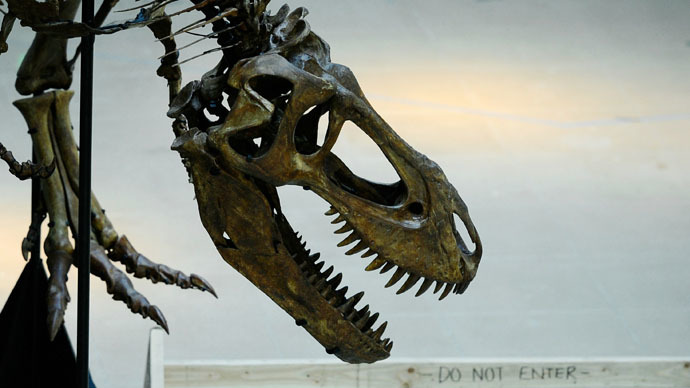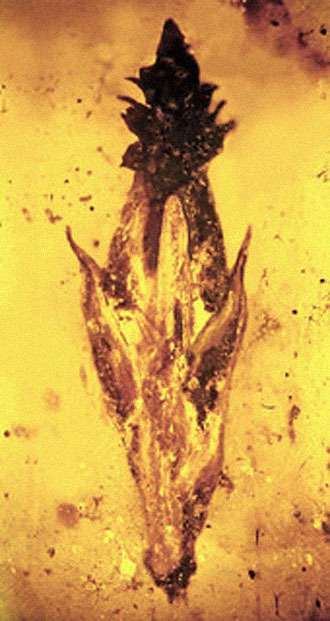Tripping dinosaurs? Oldest-ever grass evolved along with fungus used in LSD

The discovery of a 100-million-year-old grass fossil preserved in amber also contains an ancient type of ergot – the parasite that is key to synthesizing the hallucinogenic drug LSD. This points to its presence in the earliest of food chains.

“This is an important discovery that helps us understand the timeline of grass development, which now forms the basis of the human food supply in such crops as corn, rice or wheat,” he continues. “But it also shows that this parasitic fungus may have been around almost as long as the grasses themselves, as both a toxin and natural hallucinogen.”
“There’s no doubt in my mind that it would have been eaten by sauropod dinosaurs, although we can’t know what exact effect it had on them.”
READ MORE: ‘Biggest land animal’ ever? Huge 60-ton dino’s bones unearthed in Argentina
The amber fossil is an important find indeed, for it points to how the earliest grass sample ever discovered evolved together with the fungus, making it into our food chain. Scientists with Oregon State University made the observation in their study of the specimen discovered in amber mines in Myanmar.
Amber is known to be incredibly adept at preserving fossils. It oozes out of trees, slowly solidifying and engulfing whatever is in its way, as it turns into a semi-precious material.
“It seems like ergot has been involved with animals and humans almost forever, and now we know that this fungus literally dates back to the earliest evolution of grasses,” expert on amber-based life-forms at OSU George Poinar Jr. says.
Of course, LSD only came later in history, but ergot’s properties have been known for millennia, making history as both medicine and toxin, having been the culprit in a few disease epidemics. Its hallucinogenic properties gained particular notoriety for the association with the Salem witch trials – although that particular connection is still disputed. The trials were a series of prosecutions in the late 1600s in colonial Massachusetts, brought on by psychological symptoms now associated with ergot poisoning and pointing, therefore, to sorcery of some kind.
READ MORE: Groovy, baby! Magic mushrooms & LSD can cure depression – study
The fungus mainly grows on tainted rye.
Symptoms of mass hysteria would have appeared, naturally, when a large group of people would ingest bread made from the spoilt grain. Actual medical symptoms vary from irate behavior to sickness, pain, delirium and death, although the parasite was also used as medicine to help women in labor.
The form of the fungus found in the amber is not ergot per se, but a very similar form of parasite. It sits inside the amber, perfectly preserved atop the grass floret.
The fossil dates back to 97-110 million years, or the early Cretaceous – a period marked by the reign of dinosaurs, just when the earliest types of flowering plants had begun to appear, as well as small mammals.












